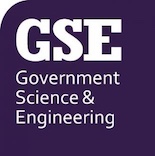In the last few months, many events have placed discussions about diversity and inclusion in the workplace firmly on senior leaders’ agendas. There is a wealth of evidence which demonstrates that greater diversity makes companies more adaptable, more productive, and more responsive to what their customers are telling them.
An inclusive organisation is one that looks beyond gender, race, age and sexual orientation to foster positive interactions, and accepts individuals for what they can achieve. Fostering an inclusive environment is a continuous effort that stems from the top of the organisation. As senior executives are highly visible and set the tone of the organisation, it is imperative that they show commitment to inclusion. It is important that inclusion and diversity are reflected in the board, leadership and senior management teams so it can be role-modelled throughout the organisation.
As part of this commitment, it is also clear that achieving gender equality is the cornerstone for inclusive growth, so eliminating the cultural and organisational barriers that restrict women’s professional advancement is a necessity. At WISE, our objective is to support employers to create a nurturing and inclusive environment for their female employees in order to achieve gender balance. Putting a spotlight on intersectionality as well as broader diversity and inclusion is of paramount importance in order to achieve our goal of women being 30% of the UK STEM workforce by 2030. We aim to achieve this by encouraging our members to use the Industry Led Ten Steps.
In parallel, we want to encourage more women into STEM by showcasing female role models from different socioeconomic backgrounds, different races and sexualities who are successfully working in STEM. Our inspirational 1 of the Million campaign has helped celebrate the success of many women who have forged successful career paths in STEM.
We welcome all those interested in accelerating gender balance and achieving a diverse and inclusive workplace, to join our WISE events.
Understanding intersectionality is pertinent in achieving an inclusive workplace. By ignoring the interconnected nature of protected groups’ categorisation - such as gender, age, race, disability, etc. - organisations create unintentionally disadvantaged groups. By assuming that, for example, all female employees share similar needs and experiences, employers fail to capture the nuances that could help them to attract and retain female talent.







